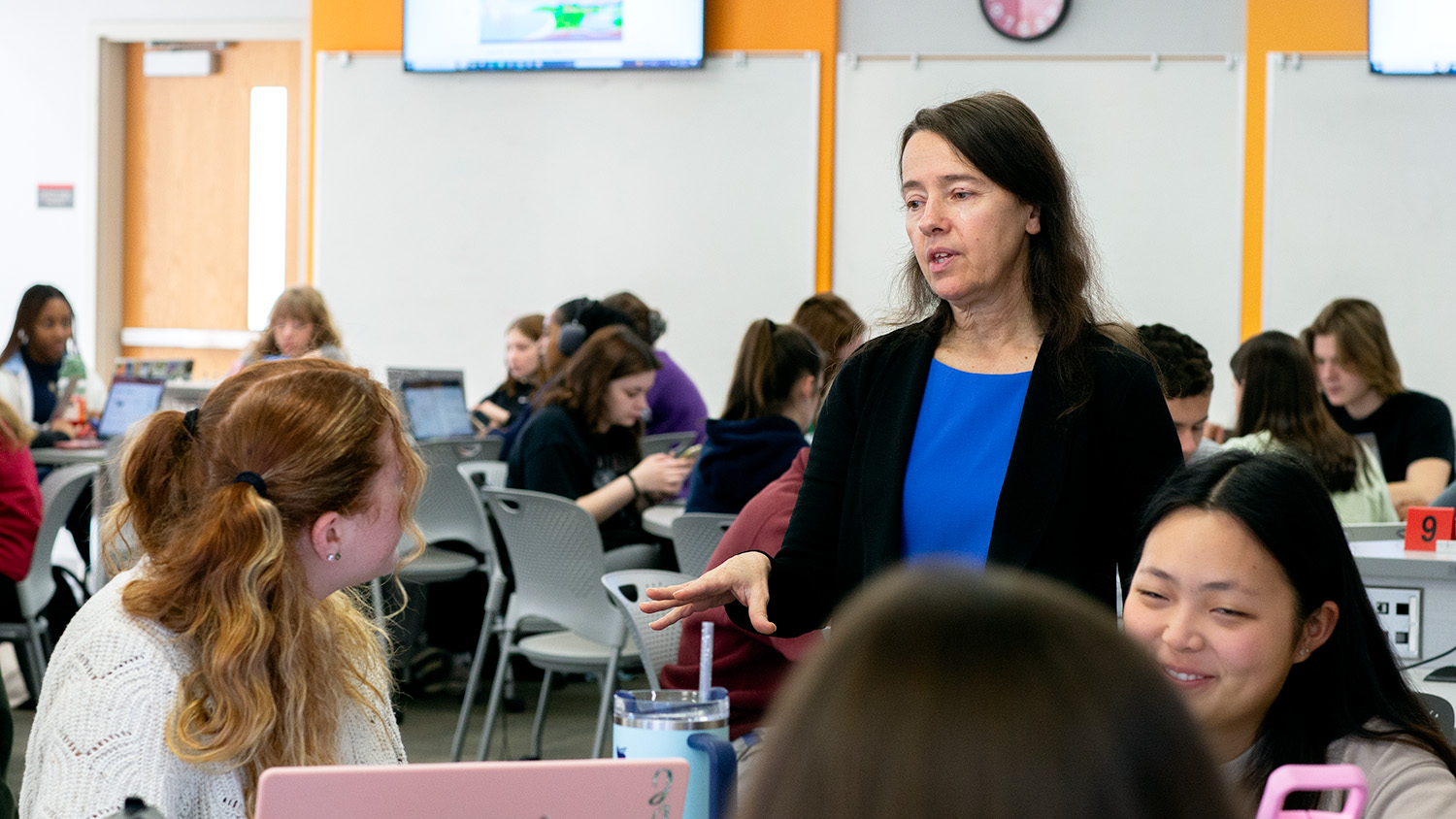DELTA Grant Deliverables Promote Student Success in Obtaining Ph.D. Degree in Statistics

Imagine enrolling in a gateway course to earn your dream degree — a Ph.D. in statistics — and you realize that in this course you need to apply complex calculus techniques to solve statistical problems. But you learned these concepts years, perhaps decades ago. In addition, this course is one of the foundational requirements for your degree. Would you be discouraged?
Associate Professors Luo Xiao, Jonathan Stallrich and Associate Professor of the Practice Emily Griffith applied for a Course Design DELTA Grant to develop the necessary educational tools needed to support students as they overcome the hurdles of this rigorous course. They noted the varying degree of mathematical training combined with a struggle to recall learned techniques was negatively affecting retention of domestic Ph.D. students — especially those from underrepresented minority groups — and turned to DELTA for a solution.
“ST 701: Statistical Theory I provides the foundation for future coursework and dissertation research,” Xiao said. “However, students have different levels of mathematical training, and many struggle to recall important calculus methods or even deduce how to approach a problem.”
DELTA was onboard to create resources to address individual student needs in the following three areas:
- Reviewing calculus techniques
- Reinforcing understanding of core concepts
- Developing critical-thinking skills to approach challenging problems
“Before the DELTA Grant, students relied on textbook problems to reinforce understanding of core concepts, but many found the problems too challenging and became discouraged,” Xiao said. “We lacked the resources to provide a bridge into the course and wanted to create a series of video lectures reviewing fundamental calculus concepts (e.g., differentiation, integration, series), accompanied by practice problems with solutions in both typewritten and detailed in recorded video formats. This is where DELTA came in to provide expertise in technology and pedagogy which proved to be invaluable in the creation/organization of the proposed materials.”
DELTA Course Design Grant Solutions
In order to build the proposed bridge into this statistics course, DELTA needed a diverse team with complementary skill sets to get the job done. Lead Instructional Designer Jakia Salam served as the project lead and worked with Broadcast and Emerging Media Specialist Todd Buker, Lead Multimedia Designer Rich Gurnsey, Associate Director Donnie Wrights and Graphic Designer/Animator Ziyue Peng.
“The goal of this DELTA Grants Course Design project was to develop and integrate adaptive, web-based materials into the course,” Salam said. “Specifically, the project team created a series of video lectures reviewing fundamental calculus concepts accompanied by practice problems, as well as interactive graphics and videos to improve understanding of challenging topics. Additionally, the project team created refresher modules for students who need that background knowledge. There were only 14 students and we wanted to go for the simplest, most effective solution. The new resources are accessible via Moodle.”

To accomplish these goals, the team decided to focus on creating three types of deliverables:
- Self-paced optional refresher modules for students to use as a verification of their prior knowledge and problem-solving skills
- Open Educational Resource (OER) Materials and statistical resources to foster student success
- Revolution Lightboards videos created in the SAS Hall studio and faculty-created Panopto videos, graphics and visuals
This project was designed to incorporate Quality Matters (QM) best practices into products that could be used in multiple course formats including face-to-face, hybrid and online.

The above photos are taken from the lightboard videos created by DELTA and Xiao, Griffith and Stallrich respectively.
“Learning to use lightboards can be challenging and involves practice, trial and error,” Buker said. “The video is shot from two different perspectives — behind the presenter and also through the board they are writing on (like a filming through a window). Identifying and marking off space on the glass where instructors can write and/or stand is a necessity. We used a cohesive approach committing to producing two videos per faculty member with consultation services and training available to make more if they wished to do so.”
In addition, the DELTA team developed graphics for the course design along with statistical graphics showing how to find the area beneath curves. These statistical graphics included several 2D graphs as well as one animated 3D model.
Want information about how to collaborate with DELTA to develop instructional technologies for your course? Learn more about the grant cycle and how to apply for a DELTA Grant.


